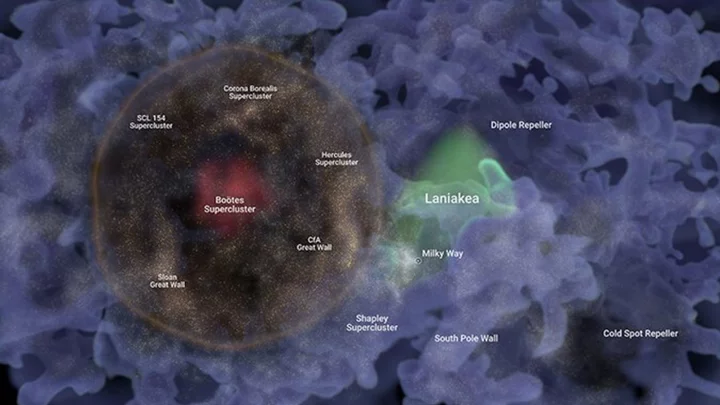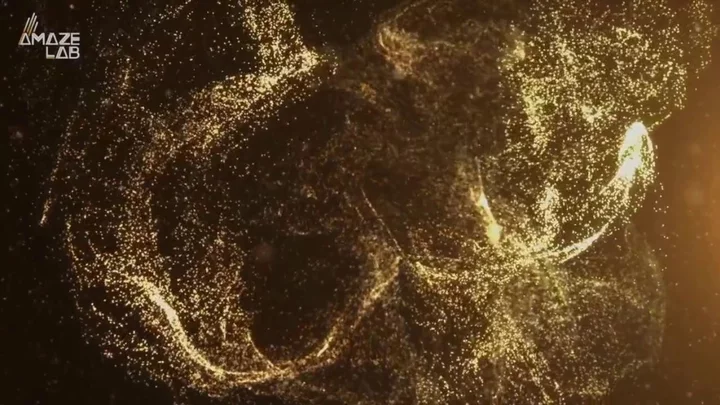
Best headphones for kids: Comfort, safety, and durability win every time
These days, raising kids means being inundated with technology. Everywhere you turn, there’s a little
2023-07-29 17:51

‘Killers of the Flower Moon’: The Grim True Story of the Osage Murders
'Killers of the Flower Moon' tells the story of the Osage murders, an especially bleak chapter of American history.
2023-08-16 22:20

X marks the lawsuit: Elon Musk's social media company sues nonprofit highlighting site's hate speech
A nonprofit organization that researches links between social media, hate and extremism has been sued by X, the social media platform formerly known as Twitter
2023-08-02 04:21

Accenture Invests in Open Cosmos to Expand Access to Satellite Data
PARIS--(BUSINESS WIRE)--Sep 11, 2023--
2023-09-11 15:56

‘And Tango Makes Three’ penguin picture book authors sue Florida over ban under ‘Don’t Say Gay’ law
A group of Florida students and the authors of an award-winning children’s picture book about the true story of a penguin family with two fathers have argued that a Florida school district unconstitutionally restricted access to the book under what opponents have called the state’s “Don’t Say Gay” law. A lawsuit filed in federal court on 20 June argues that the Lake County school district’s decision to pull And Tango Makes Three “cited no legitimate pedagogical reason for its decision” and was restricted only for “illegitimate, narrowly partisan and political reasons.” Last year, Lake County officials announced that the title was “administratively removed due to content regarding sexual orientation/gender identification” prohibited under the “Parental Rights in Education Act,” what critics have called the “Don’t Say Gay” law. That measure, signed into law by Governor Ron DeSantis last year, broadly prohibits “classroom instruction” on issues related to “sexual orientation or gender identity” in kindergarten through third grade” or “in a manner that is not age appropriate or developmentally appropriate for students in accordance with state standards” in other grades. Mr DeSantis signed a measure this year that explicitly expands the law to cover all school grades. Opponents have warned its broad scope could effectively block discussion of LGBT+ people, history and events from state schools, and be weaponised against students, staff and their families under threat from potential lawsuits against school districts over perceived violations. The lawsuit from the book’s authors Justin Richardson and Peter Parnell and the families of several young students argues that such restrictions violate First Amendment protections, including the authors’ right to freedom of expression and students’ rights to receive information. And Tango Makes Three “tells a true and heartwarming story, and it teaches students about animal behavior, adoption, diversity among family structures, and responsible family values,” the lawsuit states. “The authors wrote Tango to spread a message of tolerance and equal treatment. They have a sincere and strongly held desire to ensure that Tango is available to children learning about animal behavior, adoption, and family structures, whether similar to or different from their own – and the student plaintiffs wish to read Tango to learn about those very subjects,” the plaintiffs wrote. The book was listed among free expression group PEN America’s most-banned picture books of the last school year. Last year, a record high of more than 1,200 attempts to remove books from schools and libraries were reported to the American Library Association. There were at least 1,477 attempts to ban 874 individual book titles within the first half of the 2022-2023 school year, according to PEN America. The figures mark a nearly 30 per cent spike from book challenges over the previous year. Book ban attempts have largely targeted books by and about LGBT+ people, titles written by or involving people of colour, or materials featuring honest discussions of race and racism, according to PEN America. Mr DeSantis and his administration have repeatedly rejected characterising such restrictions as “book bans” and have accused media outlets of manufacturing a “hoax” and a “fake narrative” surrounding them. The state has been at the centre of book challenges and legal battles over school and library materials as the DeSantis administration implements a sweeping agenda targeting public education and lessons and speech he deems objectionable. PEN American and Penguin Random House, one of the largest book publishers in the world, and several prominent authors and families have also sued a separate school district and school board in Florida’s Escambia County. A lawsuit filed in US District Court last month argues that school officials have pursued an “ideologically driven campaign to push certain ideas out of schools” against the recommendation of experts. “This disregard for professional guidance underscores that the agendas underlying the removals are ideological and political, not pedagogical,” the lawsuit states. The Independent has requested comment from the state’s Department of Education. Read More A zoo, Black History event and university funding: Ron DeSantis under fire after vetoing local funding because lawmakers didn’t endorse him DeSantis wants to model America after Florida. Civil rights groups are sounding the alarm on his ‘hostile’ agenda The school librarian in the middle of Louisiana’s war on libraries ‘They were trying to erase us’: Inside a Texas town’s chilling effort to ban LGBT+ books Biden condemns ‘hysterical’ threats to LGBT+ Americans as White House pushes back on book bans Florida mom who tried to ban Amanda Gorman’s book has ties to far-right groups
2023-06-21 04:17

Mercury Innovations Leads First Deployment of E Ink Kaleido™ 3 Outdoor
BILLERICA, Mass.--(BUSINESS WIRE)--Jul 12, 2023--
2023-07-12 21:23

Binance Australia says banking disrupted as payment provider cuts service
SYDNEY (Reuters) -The Australian arm of Binance, the world's largest crypto-currency exchange, on Thursday said some customers there will be
2023-05-18 17:26

Access Marketing Company Named to Inc 5000 Fastest Growing List
DENVER--(BUSINESS WIRE)--Aug 16, 2023--
2023-08-16 22:18

Massive bubble of galaxies could be ‘fossil of the Big Bang’, say scientists
A huge bubble of galaxies that is one billion lightyears across could be a remnant of the ripples caused by the Big Bang, according to astronomers who have mapped the structure. The structure, named Hoʻoleilana by University of Hawaii scientists, is thought to have been caused by so-called Baryon Acoustic Oscillations (BAOs). These were ripples in the particles of the early Universe in the period following the Big Bang, when planets, solar systems and galaxies were not yet fully formed. As the ripples went outward, they created areas of density in the particles, causing bubble-like structures in which galaxies eventually coalesced. Until now, the BAOs were just a prediction – part of the wider Big Bang theory. No specific structures in the Universe had been found which mimicked their patterns. But Hoʻoleilana fits the description of these huge cosmic bubbles perfectly, according to Brent Tully, who led the study at the University of Hawaii’s Institute for Astronomy. “We were not looking for it. It is so huge that it spills to the edges of the sector of the sky that we were analyzing,” he said. “As an enhancement in the density of galaxies it is a much stronger feature than expected. The very large diameter of 1bn light years is beyond theoretical expectations. “If its formation and evolution are in accordance with theory, this BAO is closer than anticipated, implying a high value for the expansion rate of the universe.” The bubble is absolutely huge. It is made up of several superclusters, structures which themselves are thought to be among the Universe’s largest arrangements of matter. This includes the Hercules Supercluster, the Corona Borealis Supercluster and the Sloan Great Wall. All of these structures contain thousands of galaxies. In the middle of Hoʻoleilana sits the Bootes Supercluster and the Bootes Void, an immense space of nothingness which is an incredible 330m lightyears across. Daniel Pomarede, from the CEA Paris-Saclay University, who contributed to the research, said: “It was an amazing process to construct this map and see how the giant shell structure of Ho’oleilana is composed of elements that were identified in the past as being themselves some of the largest structures of the universe.” The research was published on 5 September in The Astrophysical Journal. Sign up to our free Indy100 weekly newsletter Have your say in our news democracy. Click the upvote icon at the top of the page to help raise this article through the indy100 rankings.
2023-09-07 20:00

Meta, TikTok given a week by EU to detail measures against disinformation
By Charlotte Van Campenhout and Bart H. Meijer BRUSSELS (Reuters) -Meta and TikTok have been given a week by the
2023-10-19 18:59

This refurbished iPad Pro is only $160 for Labor Day
TL;DR: As of August 25, get this refurbished Apple iPad Pro for just $159.97 —
2023-08-25 17:54

EV Battery-Swapping Could Help Solve the US Charging Problem
More than a decade ago, a high-flying startup called Better Place made a billion-dollar bet that electric car
2023-05-18 20:27
You Might Like...

Fieldpiece Instruments Honored With 2023 ACHR Dealer Design Award and Inclusion in “Best Places to Work – SoCal”

India May Keep Door Shut on Crypto for Two Years, Key Local Exchange Says

VoiD triumphs as 'World's Greatest Gamer' in Ludwig's epic event, fans dub him 'GOAT'

Amouranth makes appearance as ring girl for Jake Paul vs Nate Diaz, fans say 'this is hot'

Scientists are embarking on a desperate hunt to find the source of dark matter

ServiceNow to Acquire Artificial Intelligence Powered Platform G2K to Transform Retail and Beyond

New Ohmium Appointment Delivers on Sustainability and Safety Strategic Priorities

The best sexting apps for sending NSFW messages
